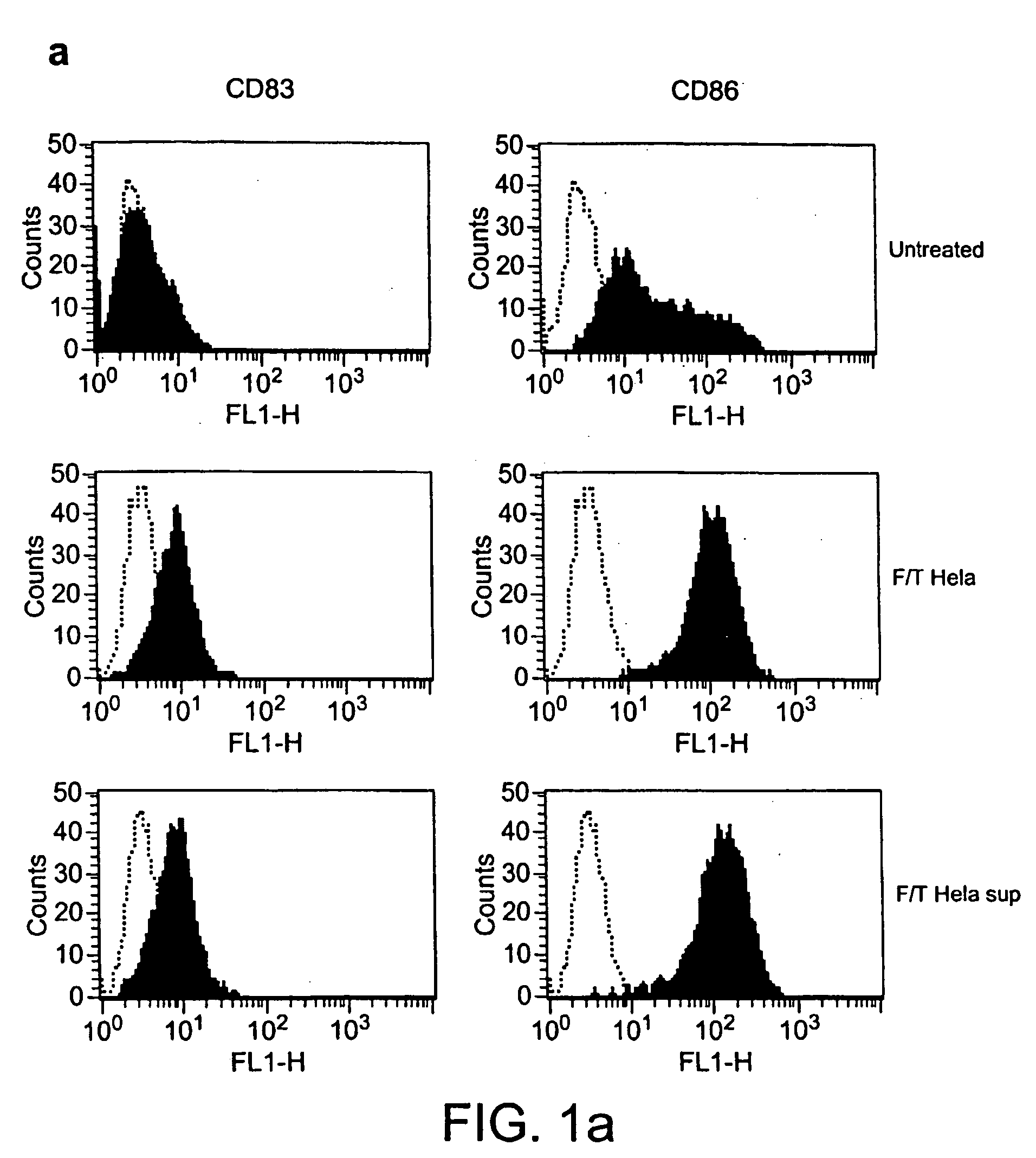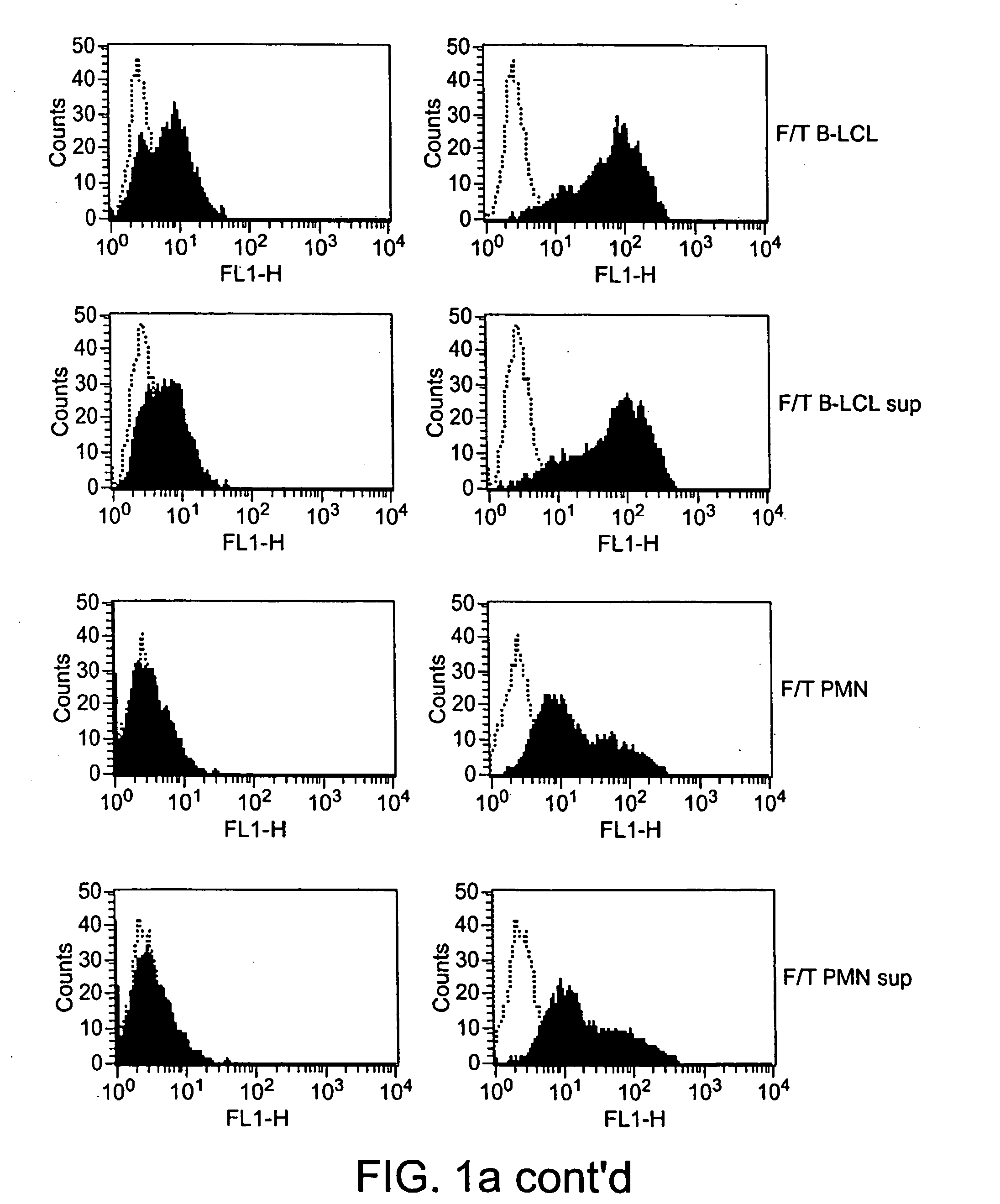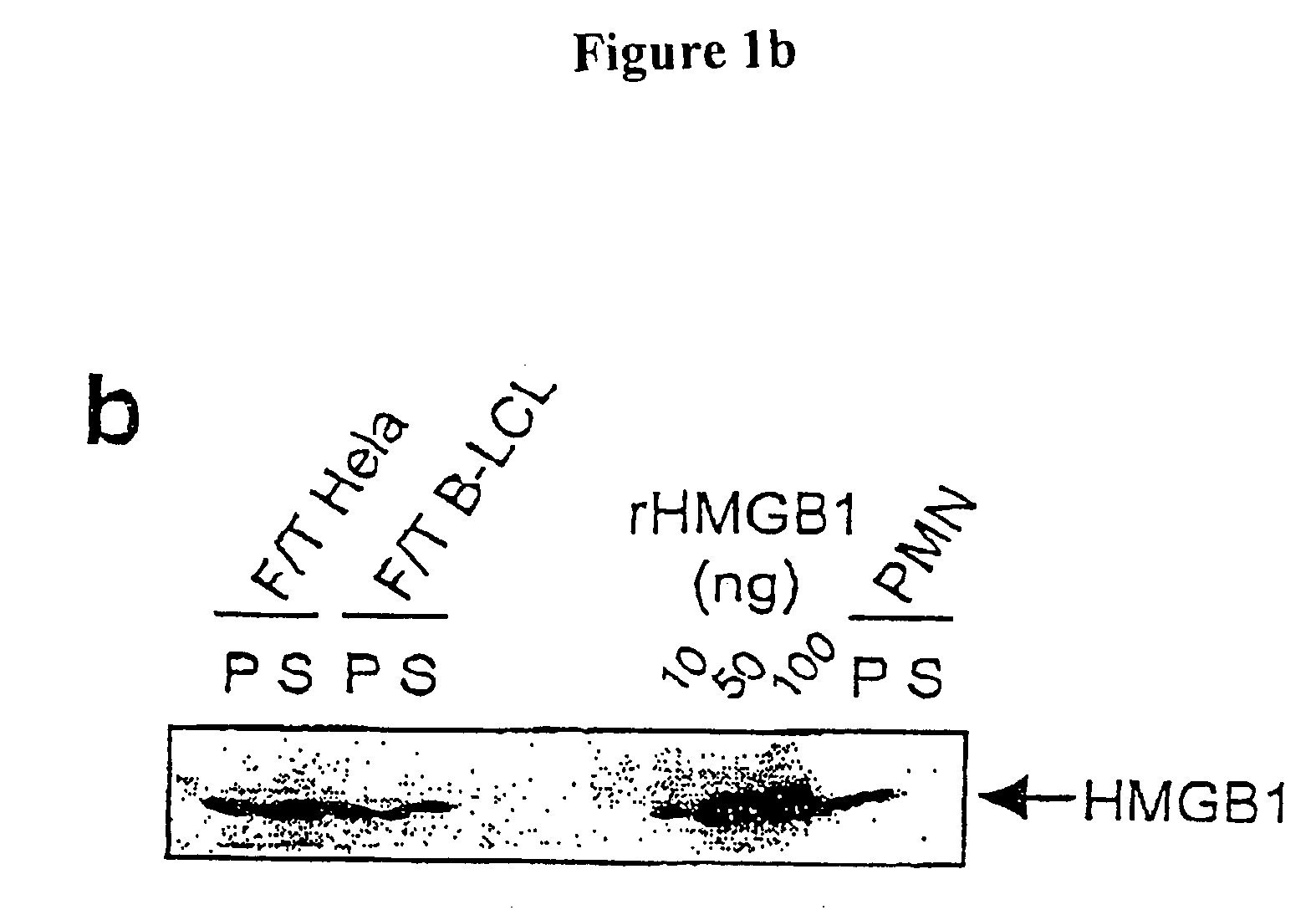Use of hmgb1 for the activation of dendritic cells
a dendritic cell and hmgb1 technology, applied in the field of dendritic cell activation by hmgb1, can solve the problems of immune system disorders, inefficient immune response, diseases that can develop, etc., and achieve the effect of reducing the expression level of hmgb1, reducing the expression of hmgb1, and increasing the expression of hmgb1
- Summary
- Abstract
- Description
- Claims
- Application Information
AI Technical Summary
Benefits of technology
Problems solved by technology
Method used
Image
Examples
example 1
Cells
[0264] DC cells and neutrophils were obtained from the blood of healthy donors, as described (26). Embryonic fibroblasts were obtained from wild-type and Hmgb1- / - animals. All the lines were tested for contamination by mycoplasma using PCR.
example 2
[0265] The cells were killed by necrosis as a result of three cycles of freezing / thawing, as described (4). Actual death was confirmed by FACS analysis after staining with FITC-annexin V and propidium iodide (9, 26). Apoptosis was induced by UV radiation (9).
example 3
Maturation of DCs
[0266] Immature DC cells were stimulated with apoptotic or necrotic cells (ratio DCs:dead cells=2:1) or with their culture medium. Where indicated, the experiments were conducted in the presence of or in the absence of anti-HMGB1 polyclonal antibodies (Pharmingen). In parallel experiments, the DCs were incubated with purified HMGB1 (0.1-100 ng / ml) or with the protein HOXD9. Maturation was evaluated after 48 hours on the basis of morphological findings and flow cytometry (9). Cellular vitality was evaluated at various treatment times. To exclude possible contamination by endotoxin, experiments were carried out in a medium containing polymyxin (Sigma; 70 u / ml), as described (12). In these conditions, addition of purified LPS (E. coli 026:B6 from Sigma, 100 ng / ml) did not lead to significant maturation, whereas recombinant TNF.alpha. caused efficient maturation of the DCs.
PUM
| Property | Measurement | Unit |
|---|---|---|
| Tm | aaaaa | aaaaa |
| pH | aaaaa | aaaaa |
| concentration | aaaaa | aaaaa |
Abstract
Description
Claims
Application Information
 Login to View More
Login to View More - R&D
- Intellectual Property
- Life Sciences
- Materials
- Tech Scout
- Unparalleled Data Quality
- Higher Quality Content
- 60% Fewer Hallucinations
Browse by: Latest US Patents, China's latest patents, Technical Efficacy Thesaurus, Application Domain, Technology Topic, Popular Technical Reports.
© 2025 PatSnap. All rights reserved.Legal|Privacy policy|Modern Slavery Act Transparency Statement|Sitemap|About US| Contact US: help@patsnap.com



